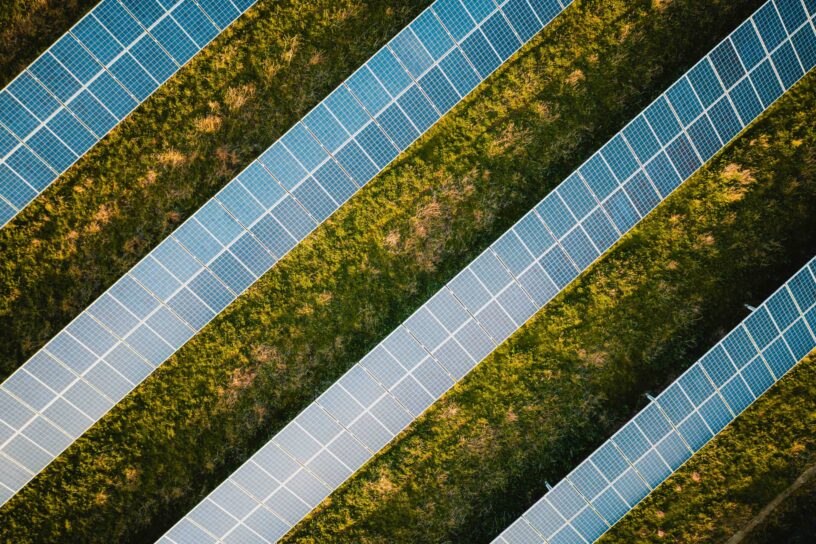The Growing Popularity of Solar Energy
Solar energy has been gaining popularity around the world in recent years. It is a renewable source of power that doesn’t produce harmful emissions, making it an attractive alternative to traditional fossil fuels. Plus, it can save money on electricity bills in the long run.
More and more households and businesses are installing solar panel systems on their rooftops to generate clean energy. According to the International Energy Agency, solar energy was the fastest-growing power source worldwide in 2020, accounting for almost 40% of all new electricity generation capacity.
Additionally, governments are increasingly investing in large-scale solar projects to provide clean energy for entire communities. For example, in India, the government has set a target of achieving 100 gigawatts of solar power capacity by 2022.
The Importance of Renewable Energy Sources in Combating Climate Change
Climate change is one of the greatest challenges facing our planet today. Burning fossil fuels releases greenhouse gases into the atmosphere, trapping heat and causing global temperatures to rise.
Renewable energy sources such as solar power can help to mitigate climate change by reducing our dependence on fossil fuels. We can generate electricity without emitting harmful greenhouse gases by harnessing the abundant energy from sunlight.
Furthermore, renewable energy sources are sustainable over the long term because they do not deplete finite resources like coal or oil. By investing in renewables now, we can build a more resilient and sustainable future for future generations.
Solar energy is an integral part of our transition towards cleaner and more sustainable forms of power generation. Its growing popularity is a testament to its effectiveness in reducing carbon emissions and mitigating climate change.
Benefits of Solar Energy
A Clean and Renewable Source of Power
Regarding energy production, solar power is one of the cleanest sources available. Unlike traditional energy sources like coal or natural gas, solar energy does not produce harmful greenhouse gases contributing to climate change.
This means using solar power can help reduce air pollution and its negative impact on our health. Furthermore, solar power is a renewable resource that will never run out.
As long as the sun keeps shining, we’ll have access to an unlimited energy supply. This starkly contrasts fossil fuels, which are finite resources that will eventually deplete.
Reducing Dependence on Fossil Fuels
Solar power has the potential to significantly reduce our dependence on fossil fuels, which are currently the primary source of energy for many countries around the world. By switching to solar energy, we can decrease our reliance on these non-renewable resources and mitigate their negative environmental impacts like oil spills and air pollution.
Furthermore, relying on renewable sources like solar power can help break down geopolitical barriers created by competition over oil reserves. Access to sunlight is more equitably distributed globally than access to oil reserves, so transitioning to solar power could help promote peace and stability.
Saving Money in the Long Run
While upfront costs are associated with installing a solar panel system, over time, it can save homeowners money on their electricity bills because they generate their electricity through sunlight rather than buying it from a utility company that relies on fossil fuels for production. Homeowners with panels can even sell back excess electricity they produce through net metering programs offered by utilities in many areas worldwide.
Accordingly, installing a solar panel system is an investment in your future financial security; you don’t have to worry about rising prices or unexpected rate hikes from utilities because you’re producing your electricity. Moreover, the money saved on energy bills can outweigh the initial installation costs in the long run.
Conclusion
Solar energy is a clean and renewable source of power that can help reduce our dependence on fossil fuels and mitigate climate change. It offers many benefits to homeowners, businesses, and communities alike – from reducing air pollution to saving money on electricity bills over time. While there are challenges facing the widespread adoption of solar energy, like high upfront costs, it is clear that the benefits far outweigh any short-term investments.
How Solar Energy Works
The Conversion Process
Solar energy converts the sun’s energy into electricity at its most basic level. This is done through the use of solar panels that are designed to absorb sunlight and convert it into an electrical current. The process is relatively simple, but its technology is quite complex.
Solar panels are made up of photovoltaic cells (PV cells), which are made from semiconductor materials like silicon. When sunlight hits these PV cells, it excites electrons within them and causes them to move around.
An electrical field within the cell causes these electrons to flow in a specific direction, creating a current. The amount of electricity that a solar panel can generate depends on several factors, including the amount of sunlight hitting it, the angle at which it’s installed, and the PV cells’ efficiency.
Types of Solar Panels
Several types of solar panels are available today, each with its own advantages and disadvantages. The most common type is a crystalline silicon panel, which comprises individual PV cells arranged in a grid-like pattern.
These panels have an efficiency rating ranging from 15% to 20%, meaning they can convert between 15% and 20% of the sunlight they receive into usable electricity. Another panel type is a thin-film panel, which uses thin layers of semiconductor materials instead of traditional PV cells.
These panels are less efficient than crystalline silicon panels but require less material. They’re also more flexible and lightweight, making them ideal for certain applications like backpacking or camping.
Storing Solar Energy
One challenge with solar energy is that it’s only sometimes available when we need it. For example, we still need electricity at night without sunlight. To address this issue, there are several ways to store solar energy for later use.
One way is through the use of batteries. Solar panels can be connected to a battery bank that stores excess energy generated during the day for use at night or during periods of low sunlight.
Another way is through grid-tied systems. These solar panel systems are connected to the utility grid, allowing excess energy to be fed back into the grid during times of high production and pulled from it when needed.
Overall, solar energy is an incredible renewable power source with enormous potential for widespread adoption. While some challenges are still facing its implementation, technological advances and decreasing costs suggest that solar energy will continue to play an increasingly important role in our pursuit of clean, sustainable power.
Applications of Solar Energy
Solar energy for homes and businesses
One of the most common uses for solar energy is to power homes and businesses. Solar panels can be installed on rooftops or open areas to capture sunlight and generate electricity. This energy can then power anything from lighting and appliances to HVAC systems.
In some cases, excess energy can even be sold back to the grid. Using solar energy for homes and businesses can provide several benefits.
For one, it reduces reliance on fossil fuels, which are becoming increasingly expensive and environmentally damaging. It also helps reduce electricity bills in the long run, as the cost of installing solar panels is offset by savings on utility bills over time.
Solar energy for remote areas
Another application for solar energy is in remote areas where traditional power sources are not available or cost-prohibitive. This includes rural villages, off-grid communities, and even military outposts.
Solar technology can provide a reliable power source without relying on expensive or unsustainable infrastructure like diesel generators. Solar-powered water pumps can even provide access to clean drinking water in areas where it was previously unavailable.
Innovative applications: floating solar farms and space-based power stations
As technology continues to advance, so do the applications of solar energy. One innovation is floating solar farms – large arrays of floating panels that capture sunlight over bodies of water like reservoirs or lakes.
Another futuristic concept is space-based power stations – massive arrays of solar panels orbiting Earth that beam clean, renewable energy back to Earth using microwaves. While still largely conceptual, these ideas represent exciting new frontiers in sustainable energy production.
Conclusion
Solar energy has numerous applications that make it an essential part of our transition from fossil fuels to renewable energy sources. Solar technology is a reliable and cost-effective solution for various energy needs, from powering homes and businesses to providing electricity in remote areas. With continued innovation, we may even see new applications that push the boundaries of what we thought was possible with solar power.
Challenges Facing Solar Energy Adoption
The High Upfront Costs
One of the biggest hurdles to the widespread adoption of solar power is the high initial costs. Purchasing and installing solar panels can be expensive, especially for homeowners who are not in a position to make a large upfront investment. However, it’s essential to remember that while the upfront costs may be high, solar energy can save money in the long run on electricity bills.
Government incentives and tax credits are also available to help offset the cost of installing solar panels. Many states offer rebates or other financial incentives for homeowners who invest in renewable energy sources like solar power.
Intermittency Issues
Another challenge facing solar energy adoption is intermittency issues. Solar panels only generate power when sunlight is available, which means they cannot produce power at night or on cloudy days.
However, advancements in battery storage technology have allowed excess energy generated during sunny periods to be stored and used later when needed. Additionally, grid-tied systems allow excess electricity generated by home solar panels to be sent back into the grid for others to use.
Regulatory Barriers
Regulatory barriers also pose a challenge to the widespread adoption of solar power. Some places restrict where and how solar panels can be installed or require permits that can add time and expense to the installation process.
Additionally, some utility companies may not support customers generating their electricity through rooftop solar panels as it cuts into their revenue streams. However, efforts are being made at both local and national levels to remove these regulatory barriers and promote renewable energy sources.
Conclusion
While there are certainly challenges facing the widespread adoption of solar power, significant progress has been made over recent years with research advancements in battery storage technology and expanding regulatory support from governments across the world. The benefits of solar power, such as its ability to reduce our dependence on fossil fuels and mitigate climate change, make it a worthy investment for individuals and communities. With continued support and innovation, solar energy has the potential to play a major role in shaping a cleaner, more sustainable future.



